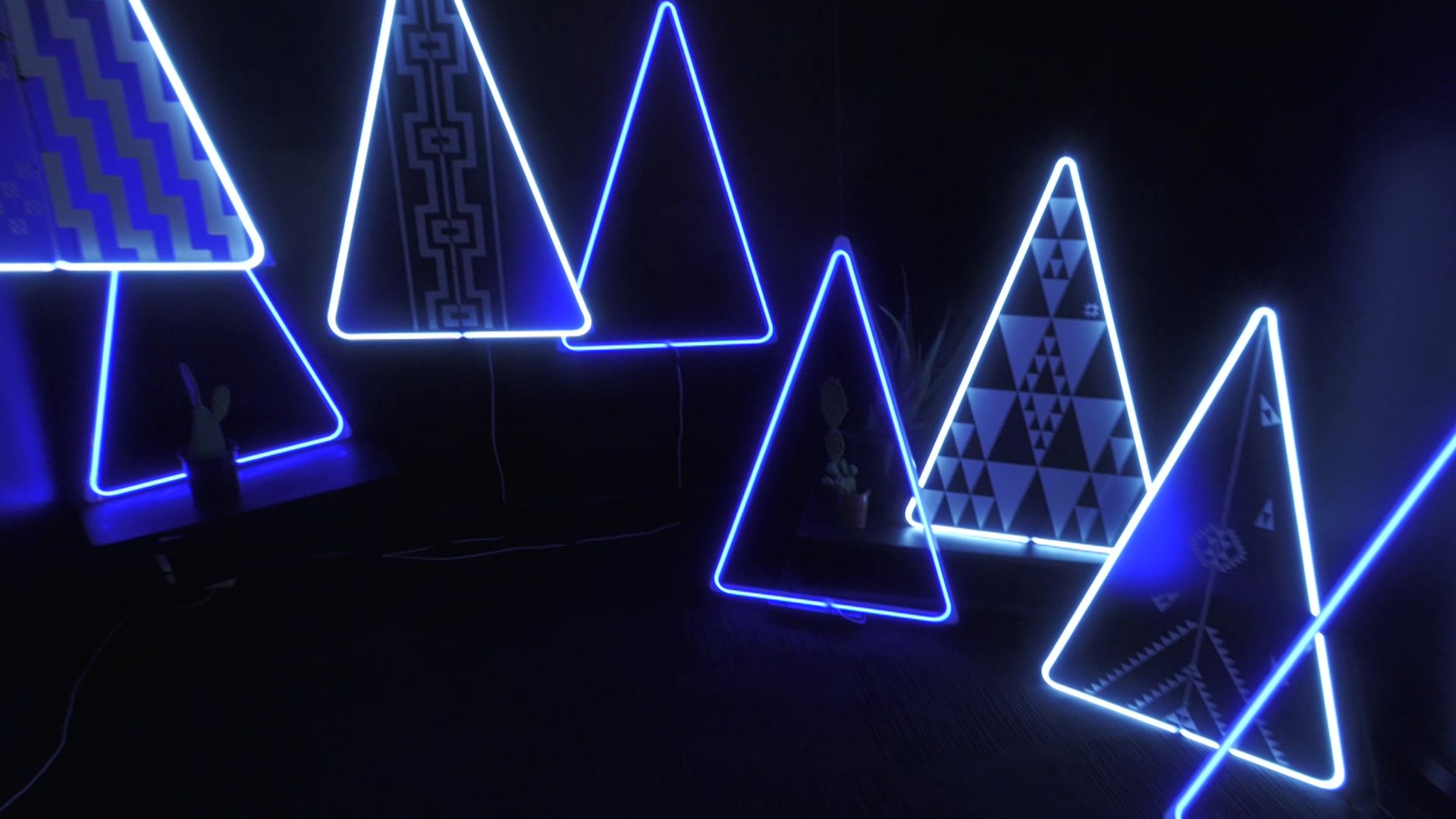The new "Hoea!" gallery and project space in Tūranga Nui a Kiwa is being curated by three wāhine Māori to develop perspectives of contemporary Māori art.
Managing Director Melanie Tangaere-Baldwin of Ngāti Porou and Rongomaiwahine says the voices of wāhine in art are undervalued nationally.
'Hoea!' strives to offer a unique perspective around Toi Māori.
“In terms of contemporary toi maori but in contemporary New Zealand art we have that same powerful voice, and we also have that clear and dedicated way of thinking. And so I wanted to make sure that people understood that, there's nothing token about us being wāhine, there's nothing token about us being Māori, that hopefully our space, it starts to break more ground of people understanding and people expecting from us the excellence that we can provide”, says Tangaere-Baldwin.
There's an extensive Maori art community in Te Tairawhiti, and the new 'Hoea!' gallery fills a niche.
“In 'Te Māori' (1984) the mahi of wahine was under-valued, the weaving was a second-thought. I'm Ngāti Porou. We come from a space where our wahine-tanga is super important, our voices are loud, we have a lot of power in our whānau, but on a national scale I don't think that's valued,” says Tangaere-Baldwin.
Making room for Māori creativity, the team at 'Hoea!' look to facilitate art that is free from commercial expectations.

“A lot of people around the world and in Aotearoa expect Toi Māori to look a certain way, so to be able to be artists and create our own space, and to create a conversation for ourselves that centres the artist, that's non-commercial, so that sales aren't the motivating factor which encourages artists to be more experimental, and not be constrained by any bonds that expect them to be what people want them to be, and generally that comes from commericalisation of Toi Māori,” says Tangaere-Baldwin.
The gallery and project space holds regular wānanga workshops and works with two local kura kaupapa Māori as well.
Tangaere-Baldwin says, “That's important to us, to make sure that the tamariki become a part of these experimental art spaces so it's not exclusive, the practice may be unusual but it doesn't mean that it's not accessible."
So that's a massive part of why we have the public programming, working in Te Reo Māori with tamariki in a contemporary art space, it shouldn't be mutually exclusive, children should be welcomed into these spaces and learn within them so they can see themselves there, realistically.”
Tangaere-Baldwin says there's a need for more indigenous-run spaces for contemporary indigenous art.
“We've had proposals from indigenous artists from Canada and from America and an indigenous-run gallery that's recognised globally, because there aren't many of those either, there aren't many spaces that are run by people that look like us and that are artists so they have the same kind of abilities as us. So as long as there is a space like this it's a real positive thing for Māori artists, it's a positive thing and it's a necessary thing.”
Hoea! is open to the public three days a week.
